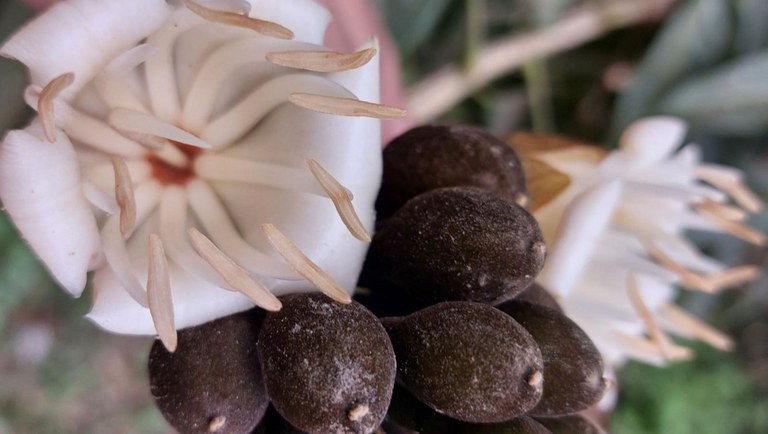Notícias
Rio Botanical Garden researchers discover new species of watermelon tree

Researchers from the Rio de Janeiro Botanical Garden and the New York Botanical Garden, with the support of CNPq, Capes, Faperj and the Marabá House of Culture Foundation, have discovered a new species of watermelon tree in the municipality of Marabá, in the state of Pará. The new species of legume has been named Alexa duckeana, in honor of Adolpho Ducke, a prominent botanist and scholar of Amazonian flora. The work already indicates the species with its conservation status as “in danger of extinction”, mainly due to the advance of the arc of deforestation in the Amazon rainforest and real estate expansion. The melancieiros are important for timber, being a relevant tree for the construction of houses and boats, widely used in the Amazon region.
Rio Botanical Garden researcher Vidal Mansano, one of the participants in the study, points out that the description of the new species is a significant finding for the Amazon flora.
- The discovery of this species reinforces the high diversity of the Marabá region, which has one of the highest rates of deforestation in the Amazon. It also shows that many areas under destruction are home to species unknown to science and with incalculable medicinal potential for humanity. Because they only occur in that region, the destruction of those forests is equivalent to the total elimination of these important species on our planet - says Mansano.
Researcher Guilherme Silva, from JBRJ, points out that watermelon trees have an alkaloid called castanospermine, which has pharmacological properties, demonstrating in vitro activity against the HIV virus. Castanospermine, discovered in the 1990s, acts to contain viral reproduction, inhibiting the entry of the virus into host cells and interfering with the replication of viral RNA. According to Guilherme Silva, studies suggest that the substance may also have immunomodulatory effects, potentially helping to strengthen the immune system and reduce the viral load in patients.
- With the discovery of the new species of watermelon, studies on castanospermine are expanding and further research is needed. But the species is already in danger of extinction, mainly because it has a restricted distribution and its specimens are recorded in areas with growing deforestation, caused by logging activities, fires, pasture clearing and even conversion of areas for mechanized agriculture in some places, characteristic of the southeastern region of Pará - he stresses.